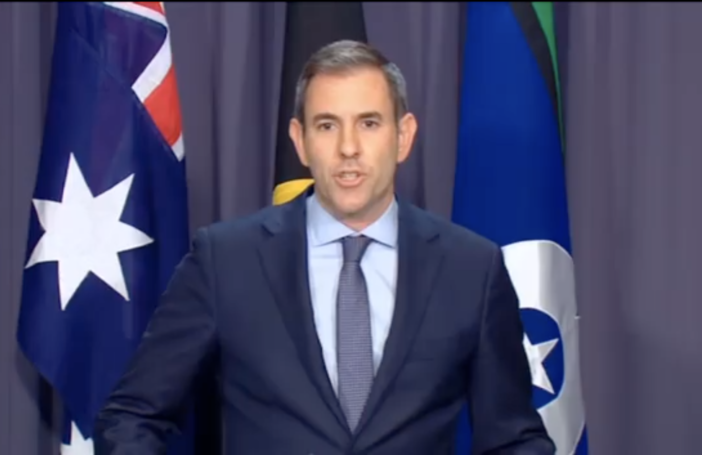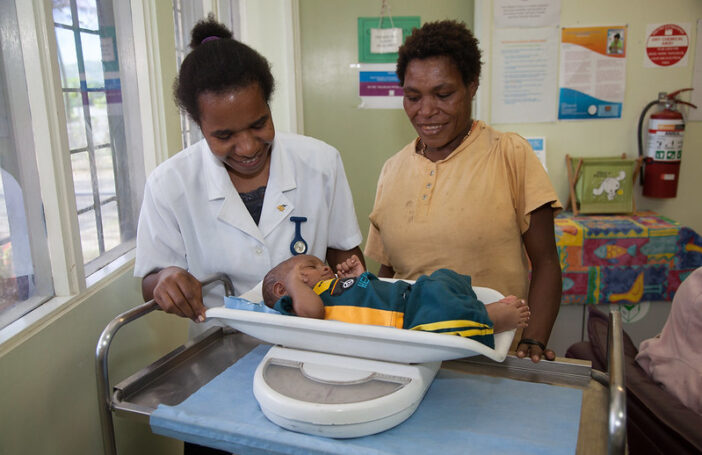Going in to the 2013 elections, the Coalition promised that it would deliver “annual increases in nominal funding in the aid budget” in line with increases in inflation. Their costed aid savings meant, we calculated, that aid in 2016-17 would be at 2012-13 levels after adjusting for inflation.
In this budget, the Coalition has delivered something quite different: a reduction in aid by 10% in real terms by 2015-16. In nominal terms, aid was cut 2.3% in 2013-14 relative to 2012-13, and then is held constant for the next two years (2014-15 and 2015-16). Add inflation to this, and we have a real (or constant price) 5.3% cut in 2013-14, and then another 2.25% this year and another 2.4% next year. This adds up to a 9.7% cut by 2015-16 relative to the 2012-13 base.
 Though a very significant cut, it is not unprecedented. Costello cut aid by 9% in real terms in his first budget in 1996, and then by 1% the following year, but the Coalition did then start to increase aid and began the scale-up which subsequently drove aid budgets to record levels. There is no such plan in the current budget. After 2015-16, aid will simply be held at its then real level. The cuts will not be made good.
Though a very significant cut, it is not unprecedented. Costello cut aid by 9% in real terms in his first budget in 1996, and then by 1% the following year, but the Coalition did then start to increase aid and began the scale-up which subsequently drove aid budgets to record levels. There is no such plan in the current budget. After 2015-16, aid will simply be held at its then real level. The cuts will not be made good.
It is easy to argue that this was the fiscal adjustment we had to have, and that aid needed to play its part. But even if one accepts this, the cuts to aid are disproportionate. The share of aid in total government expenditure is set to fall from 1.35% in 2012-13 to 1.11 in 2017-18, a fall of 17%. To put this another way, between 2012-13 and 2017-18, government expenditure on aid is set to fall by 10% in real terms; government expenditure on everything else is set to rise by 10%.
Whatever one thinks of this strategy, there is no doubt we are now in a new era, where aid is scaling down rather than up. Since aid itself is heading south in real terms, the ratio of aid to both total expenditure and to GNI must be heading in the same direction. Indeed, as the figure below shows, by the end of the forward estimates both these ratios will be back at the level they were at in 2005-06.
 Note: This figure has been updated with revised GNI numbers. All figures, working, and sources can be found in this spreadsheet (.xlsx),
Note: This figure has been updated with revised GNI numbers. All figures, working, and sources can be found in this spreadsheet (.xlsx),
What about the quality of the aid spend? Since the overall aid budget is being kept constant in nominal terms between 2013-14 and 2014-15, any increases in particular areas have to be offset by savings elsewhere. There are three major sources of savings:
- The $375 million of the aid budget that had been used to support asylum seekers in Australia is being returned for development purposes (since there is no more onshore processing of asylum seekers arriving by boat).
- About $100 million is being saved by reducing aid to Africa and to Latin America.
- About $120 million is being saved by reduced administrative costs associated with the aid program: with far fewer staff, and back-office costs now shared with DFAT.
That gives total savings of $595 million which will be spent in 2014-15 as follows:
- About $60 million additional aid has been given to PNG as part of the agreement reached in relation to the Manus solution.
- Another $55 million has been given to regional organisations and initiatives largely to restore cuts made in the current year.
- An extra $65 million has been allocated for humanitarian purposes, again to restore cuts made this year.
- An additional $30 million is being held in contingency.
- And a huge extra $380 million has been allocated to “Cross Regional Programs”. Some of this is an increase in scholarships (which are still going to increase to 4,500 awards this year, in line with the original 2013-14 target indicating that scholarships have been quarantined from cuts), but most of this massive increase is unexplained.
Thus the $595 million of savings are approximately expensed by these $590 million of additional spending. They are a mixed bag. Most would welcome the release of the asylum seeker funding, the increased commitment to humanitarian aid, and the enhanced regional focus. But whether this generosity to regional organisations is justified, and whether the administrative savings go too far are matters that can be debated. The increase in aid to PNG is hard to justify, and there’s simply no information to judge the biggest increase of all in cross regional programs, though we might know more soon – more on this below.
There are other small increases and decreases such as another $11 million to double the amount of the aid program (the Direct Aid Program) which sits at the discretion of Heads of Mission. But lots of things don’t change very much, including commitments to NGOs, and, overall, to multilaterals.
And that’s about it. There is not a lot of information on aid in this year’s budget. There is no aid “Blue Book”, as there has been at least since 2001-02. Why the Blue Book, which was good enough for Downer and Howard, has been done away with has not been explained. There is some information posted on the DFAT budget page and on existing aid country web sites, and there is some extra information in the main budget documents, but there has no doubt been a big net information loss compared to earlier budgets. Go the aid website to see how much we are spending on multilaterals, and you’ll find a 2011-12 figure. Try to find out how much is being given through the ANCP program for Australian NGOs and you’ll find a 2012-13 figure. Figures on how much other government departments are spending are mainly only available in aggregate.
And don’t try to look for sectoral information. ODA by sectoral spend is simply not provided. This awaits the release of the Government’s aid policy and new benchmarks “in the coming weeks” – and will no doubt be accompanied by some new initiatives to expense some of that $380 million currently parked under cross regional programs.
For a government which promised to enhance aid transparency and to protect the real value of aid, it is a discouraging beginning.
Stephen Howes is Director of the Development Policy Centre.





Thanks Stephen.
What has been included in the past in “cross-regional programs”? And what do you suspect might be added in the coming months? You mention scholarships – do you think scholarship increases might make up the huge increase? Maybe an increase to medical research in line with the Medical Research Future Fund? An Australian Grand Challenges fund like that of Canada or Israel or Brazil?
Or just the convenience of a fuzzy category that allows DFAT to decide later?